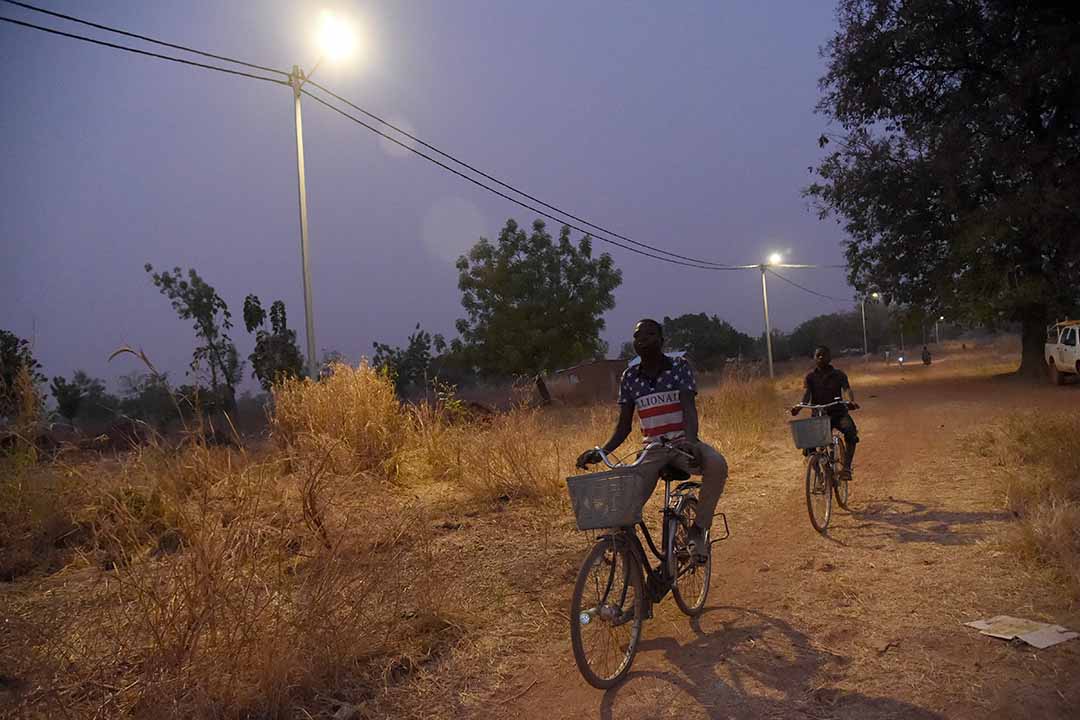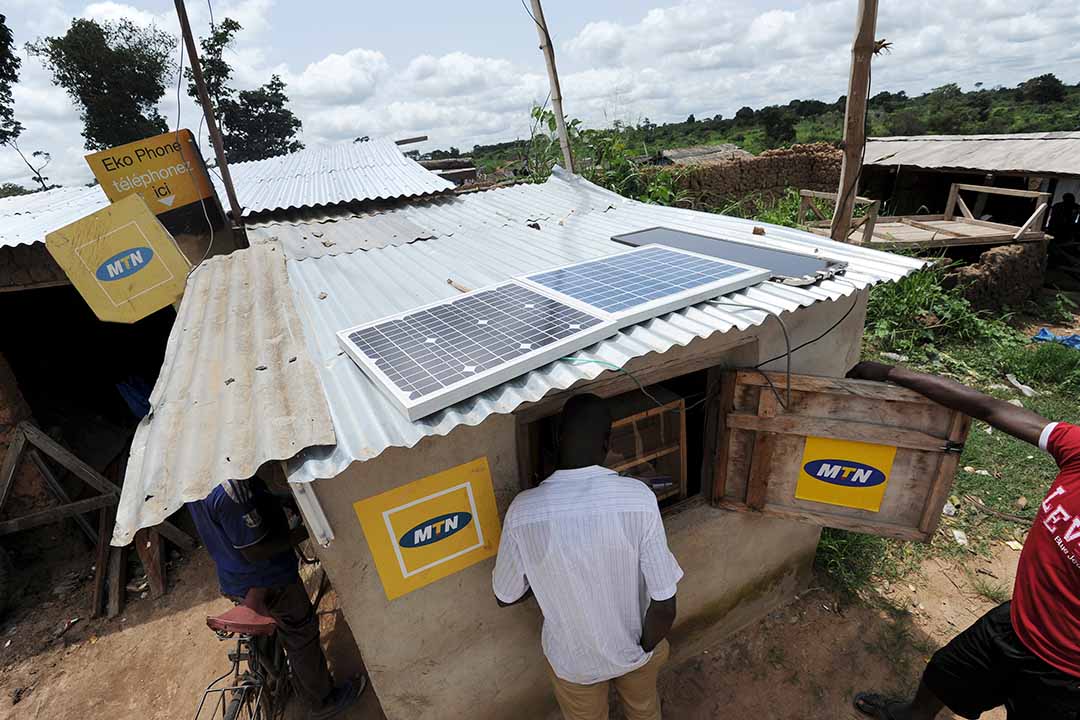Solar power: the dark side
Traded as environmentally sound, solar power leaves waste that could engulf Africa in the same way as plastic

Daniel Wesonga, a resident of Moi Farm village in western Kenya, is a happy man since purchasing a small solar lamp the size of a medium cup, which also has a high frequency radio. He is now sure of light and entertainment, two things that are about to change his otherwise boring and dark village nights. The 47-year-old father of six has depended on a paraffin lamp, which he says is expensive, considering that he has spent an average of Sh30 ($0.30) of his daily wage of Sh150 ($1.50) as a bicycle repairer on kerosene to ensure his children do their homework for at least three hours every night.
”I bought this on hire purchase, after paying a deposit of Sh600 ($6),” Wesonga told Africa in Fact. “I now have a balance of a similar amount to be paid over the next six months to wholly own the gadget. Farewell to kerosene and messy soot!” Almost every household in the tiny village on the bank of the River Nzoia has a solar gadget, thanks to aggressive marketing by solar firms that have focused especially on rural Africa, where the majority of homesteads are yet to be connected to the power grid. Asked what he will do with the small solar gadget if becomes faulty, Wesonga rubs his thin pale palms on his bushy face. ”I’ll just throw it away, what else can I do?”
Wesonga, just like tens of millions of other people in Africa who have heeded the sustainability agenda and embraced solar power, is clueless on how to handle solar waste. Their governments, which have generously provided incentives to solar firms to ensure high uptake, are not helping either. For instance, Kenya lifted all Value Added Tax (VAT) charges on imported solar products in 2014, and zero-rated import duty on solar imports to motivate households to adopt the cheaper and environmentally friendly energy.
Yet the country has no waste policy to curb mass dumping of photovoltaic panels, which have short lifespans, just like any other electronic gadget. Renewable energy expert Jacob Ng’eno, of African Solar Designs based in Nairobi, says that while solar energy is traded as environmentally sustainable, growing mountains of broken or otherwise non-functioning panels that are likely to be disposed of in two or three decades will wreck the environment.
The Global E-waste Monitor (2017): regional e-waste
In 2016, Asia was the region that generated by far the largest amount of e-waste (18.2 Mt), followed by Europe (12.3 Mt), the Americas (11.3 Mt), Africa (2.2 Mt), and Oceania (0.7 Mt). While the smallest in terms of total e-waste generated, Oceania was the highest generator of e-waste per inhabitant (17.3 kg/inh), with only 6% of e-waste documented to be collected and recycled. Europe is the second largest generator of e-waste per inhabitant with an average of 16.6 kg/inh; however, Europe has the highest collection rate (35%). The Americas generate 11.6 kg/inh and collect only 17% of the e-waste generated in the countries, which is comparable to the collection rate in Asia (15%). However, Asia generates less e-waste per inhabitant (4,2 kg/inh). Africa generates only 1.9 kg/inh and little information is available on its collection rate. The report provides regional breakdowns for Africa, Americas, Asia, Europe, and Oceania.
Source: Baldé, C.P., Forti V., Gray, V., Kuehr, R., Stegmann,P. : The Global E-waste Monitor – 2017, United Nations University (UNU), International Telecommunication Union (ITU) & International Solid Waste Association (ISWA), Bonn/Geneva/Vienna.

A property developer who violates the rules risks a year in prison or a $10,000 (Sh1 million) fine or both. The standard lifespan of solar gadgets ranges from 20 to 30 years, which means that some of the panels installed in the early part of the current boom are not far from their expiry date. Yet, the country’s e-waste draft Bill 2013 continues to gather dust on parliamentary shelves seven years on. Nor is it a priority for the 12th parliament that will exit office in 2021. By then, every person in the world will have at least seven kg of e-waste to dispose of every day, up from 6.1 kg, as captured in the United Nations Global e-waste Monitor, 2017.”Solar waste will soon form a huge part of electronic waste,” Ng’eno said.
“And it’s not easy to recycle. Solar waste will outdo plastic waste, which has wrecked the world in past decades.” He urged African states to come up with urgent plans to deal with e-waste. The Kenyan government’s soft heart for solar traders has seen at least 20,000 additional families acquire solar gadgets. In 2017, Kenya enforced regulations compelling hotels, educational centres and residential buildings to install solar water heating systems, with the aim of reducing carbon dioxide emissions by as much as 15% by 2030.
According to that report, the photovoltaic panels associated with solar energy are classified as “large equipment”. The solar waste menace is likely to get ugly in Nigeria, which is a boom market for solar firms, occasioned by high population and extreme poverty. Like Kenya, the western African nation has attracted a significant amount of solar Foreign Direct Investment (FDI) in the past decade, especially in rural and home solar and photovoltaic (PV) electrification.
In Kenya, solar importers have to meet basic requirements – such as obtaining a class V2 licence from the Energy and Petroleum Regulatory Authority (EPRA), which entitles them to carry out the manufacture or import of solar PV systems or components. Nigeria’s market, meanwhile, is grossly unregulated. This has led to a market in sub-standard solar power products, which have much lower lifespans, and it will inevitably result in considerable e-waste. A recent study by the World Bank placed Nigeria among countries in the world with poor electricity penetration.
High levels of power outages (at least 32.8 in a month) have made the inhabitants of Africa’s most populous nation easy prey for unscrupulous solar vendors. Nigeria aims to install 30,000 megawatts of solar PV by 2030 as outlined in the country’s Intended Nationally Determined Contributions (INDCs) action plan dated December 2019. Most of this will be installed off-grid, while Nigeria aims to have about 40 million batteries, according to an Institute of Development Studies (IDS) publication of December 2016. But the typical lifetime of a battery is only about three years, compared to the 20-25 year average lifespan of PV panels.

So this means that over the lifetime of this project about 280 million batteries will have to be installed, replaced, recovered and recycled to achieve 30,000 MW solar PV capacity. Most of them will find their way into domestic garbage bins. A similar fate awaits other African countries with similar solar power targets in terms of the African Renewable Energy Initiative (AREI) of 2015, which calls for the continent to install 300 GW of solar power by 2030. It is perhaps what motivated the Nigerian government to introduce taxes on solar products in February 2018. There’s now a 5% import duty on solar panels and 5% VAT, whereas in the past there were no tariffs on solar panels.
Nigeria also slapped a 20% import duty on solar batteries, to discourage mass imports. Rwanda is one of few countries in the region to have put in place tight regulations to combat the impending solar waste chaos. In July 2014, Rwanda introduced regulations to guide solar water heater dealers, to regulate the market and also to protect consumers from unscrupulous firms. The country’s solar water heating regulations are meant to support the government’s ambitious programme to install 12,000 quality solar water heaters countrywide – which should translate to a saving of 23,328 MHw on the national grid by the end of this year.
Tough penalties have also been set for suppliers and technicians who fail to meet the minimum standards, a move which protects against the dumping of substandard goods. “These regulations are intended to provide a licensing and regulatory framework for the design, installation, operation, repair, maintenance and upgrade of solar water heating systems in Rwanda,” according to the draft regulation issued by the Rwanda Utilities Regulatory Authority (Rura). The regulation also sets minimum academic qualifications and professional requirements for technicians of solar water heaters in the country.
Those found violating the rules face cash penalties that range from Rwf10,000 – Rwf5 million ($10.50 to $5,300) depending on the offence. Despite these measures, solar firms continue to troop to Rwanda, thanks to the government’s tax policy, which imposes an almost zero rate on solar products, with the aim of reducing the country’s heavy dependency on thermal electricity. In addition to offering tax exemptions, the Rwandan government is meeting 25% of the cost of imported solar power water heaters. Each heater costs between Rwf800,000 and Rwf900,000 (about $900) on the open market in Kigali.
The country is now a significant importer of solar gadgets, which are fast becoming a dependable source of energy, especially in rural areas that are yet to be connected to the national power grid. Yet, as the number of imports into Africa increase each year, so does the solar waste pile, polluting rivers, soils and the air when burnt. In 2016, the UK’s Department for International Development (DFID) commissioned a multi-country study to research electronic waste in Africa’s off-grid renewable energy sector. The report concluded that the off-grid solar sector across 14 sub- Saharan African countries would produce 3,600 tonnes of electronic waste the following year.
While this represented a fractional percentage of total estimated electronic waste flows, it also put waste from off-grid solar products on a par with electronic waste from the mobile phone industry. Globally, the International Renewable Energy Agency (IRENA) projects solar waste to hit 78 million tonnes by 2050, most of it in Africa.
E-waste generation and collection per continent
| Indicator | Africa | Americas | Asia | Europe | Oceania |
| Countries in region | 53 | 35 | 49 | 40 | 13 |
| Population (millions) | 1,174 | 977 | 4,364 | 738 | 39 |
| Waste generation (kg/inh) | 1.9 | 11.6 | 4.2 | 16.6 | 17.3 |
| Indication WG (Mt) | 2.2 | 11.3 | 18.2 | 12.3 | 0.7 |
| Documented to be collected and recycled (Mt) | 0.004 | 1.9 | 2.7 | 4.3 | 0.04 |
| Collection rate | 0% | 17% | 15% | 35% | 6% |
Source: Baldé, C.P., Forti V., Gray, V., Kuehr, R., Stegmann,P. : The Global E-waste Monitor – 2017, United Nations University (UNU), International Telecommunication Union (ITU) & International Solid Waste Association (ISWA), Bonn/Geneva/Vienna



